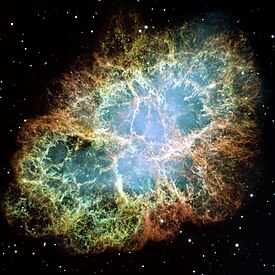Portal:Physics/Selected article/May 2008

The Speed of Light, or c, is a physical constant equal to exactly 299,792,458 meters per second, or approximately 983,571,056 feet per second, and is the speed of all frequencies of light in a vacuum. Since 1983, the speed of light is used to define the SI unit if one meter. Light can travel at average lower speeds when passing through translucent materials. Denser materials than air, slow the observed speed of light down more than lighter ones do. For instance, light traveling through a diamond travels at approximately 124,000,000 meters per second.
Experimental evidence has shown that the speed of light is independent of the motion of the source. It has also been confirmed experimentally that the two-way speed of light (for example from a source, to a mirror, and back again) is constant. It is not, however, possible to measure the one-way speed of light (for example from a source to a distant detector) without some convention as to how clocks at the source and receiver should be synchronized. Einstein postulated that the speed of light should be taken as constant in all cases, one-way and two-way.
Astronomical distances are sometimes measured in light years (the distance that light would travel in one Earth year, roughly 9.46×1012 kilometres or about 5.88×1012 miles). Because light travels at a large but finite speed, it takes time for light to cover large distances. Thus, the light we observe from distant objects in the universe was emitted from them long ago (pictured is the Crab Nebula as it looked ~6.5 X 103 years ago).
